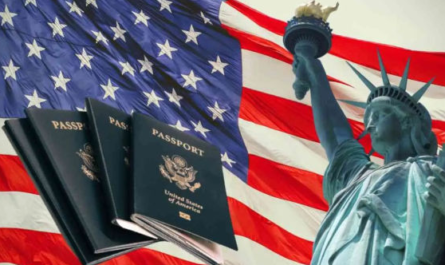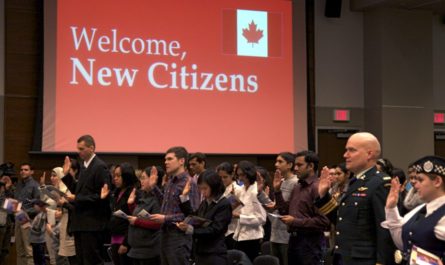This page will discuss the main steps you need to take to get your United States student visa approved without stress. Should in case you don’t know, the United States remains one of the top international student destinations in the world in spite of recent controversial measures regarding visa restrictions.
The appeal the U.S. presents to international students is its wide variety of study programmes and universities, top-ranked degrees, well-equipped laboratories, generous PhD funding and the chance to know cultures from all over the world.
In light of new American immigration regulations as well as the Coronavirus global crisis visa regulations have suffered changes and may be more complicated, but that shouldn’t stop you from pursuing your dream of studying abroad.
How To Successfully Secure Your United States Student Visa in 2022
1. Apply for Admission in University and get your Acceptance Letter
If you’re still not sure where you want to study in the U.S., you will have to decide before you can apply for the student visa. You’ll need an acceptance letter (I-20 form) from the university to start your visa application process. Some American universities may also offer you assistance and advice with the visa application process so don’t hesitate to come to them with your questions.
2. Find out what type of student visa you need
Currently, there are three different student visas that you could be issued for international students coming to the U.S.:
- F-1 Visa: This is issued to students who are attending an academic program or English Language Program, valid until the completion of your study programme.
- J1- Visa: This visa is for exchange students.
- M-1 Visa: For students who plan to attend a non-academic (technical) or vocational school, excluding language schools.
NOTE: The F1 Visa is the most common study visa for international students who want to study a full-time degree in the U.S. Provided you are not an U.S. citizen will need an F1 Student Visa to attend a university or college in the States.
3. Requirements to Meet for the U.S. Student Visa
It is required that applicants must satisfy the below strict criteria in order to receive the visa.
- Students must have a residence in their home country, where to return after completing their studies.
- The students may only study at the accredited academic institution (SEVP approved schools) through which the visa was granted.
- Applicants must demonstrate sufficient financial support.
However, the required monthly amount is not officially defined and may vary depending on your home country. - All applicants must demonstrate that they have strong ties to their home country, such as a job offer letter upon completion of studies, personal assets (i.e., house, land, vehicle, etc.), bank accounts, family, etc.
- Additional documents may be required depending on the country you are applying from.
- Speaking English is not a requirement for a student visa, but it will be a requirement for your university admission. You will also have to speak in English during your visa interview.
4. Arrange your Visa Documents and Start your Application
First, you will have to find the embassy or consulate affiliated to your country or region where to submit your visa application. You can find yours in this list of websites of U.S. Embassies, Consulates, and Diplomatic Missions.
Although the process may vary or require additional steps, depending on your country and embassy or consulate, you will need the following when applying for your student visa:
- Certificate of Eligibility for Non-immigrant (F-1) Student Status (Form I-20), received from your university after you pay the SEVIS fee: 350 USD.
- Receipt of paid application fee of 160 USD for the U.S. Embassy in your country.
- Submit Online Form DS-160 for a non-immigrant visa, and bring it to your interview.
- Passport with a validity date at least six months beyond your intended period of stay in the United States.
- Any old passports.
- Documents that prove your financial situation (bank statement), or financial support during your studies.
- Standardized recent digital color photo.
- Transcripts, diplomas, degrees, or certificates from schools you attended, and any standardized test scores.
5. Attend the F1-Visa Interview
Your F-1 Visa interview will determine whether you are qualified to receive a USA F1 student visa. Digital fingerprint scans will be taken for records. Your passport will be taken so that you can get your visa and you will be informed when you can get it back.
Bring all of the required documents and receipts. A letter from a university professor supporting your study plan can be useful. You will be required to answer personal questions about your decision to study in the U.S. If you are unable to answer the questions in English, you can ask for an interpreter. The interview will not be longer than 5 minutes.
Interview questions will focus on the following topics:
- Why you chose to study in the U.S.
- Academic qualifications (test scores) and questions about the university you enrolled in.
- Ties and obligations that ensure your return to your home country, after graduation.
- Proof that you have the means to finance your education.
Based on your answers the consular officer will approve or deny your student visa application. You need to convince him or her that you plan to return to your country after your years of study in the United States.
Tips for passing the student visa interview
- Dress formally for your interview. First impressions can be crucial.
- Practice your English before the interview. While this is not a requirement for approval, it can create a good impression and stress your commitment to studying in America.
- Know the programme you are applying for, and how it fits your career plans.
- Be to the point, as there are many student visa applicants and visa officers are under a lot of time pressure.
- Make it easy for the visa officer to browse your documents.
- Keep a positive attitude. If you are denied the visa, ask for additional documents you could bring in order to contest the refusal.
- If your spouse and children are remaining behind in your country, be prepared to explain how they will support themselves in your absence.
6. Wait for your Visa Confirmation
Student (F and M) visas for new students can be issued up to 120 days in advance of the start date for a course of study.
Waiting times to for your visa appointment vary wildly between countries. You could get it in 3 days or in 3 months, depending on the case. The COVID-19 crisis complicates waiting times even more. So make sure you check the average visa appointment waiting times for the embassy or consulate in your region.
In most cases, U.S. visas should still be issued for students who want to study in the U.S. even during the COVID crisis. Just check to make sure, before you start making plans.

